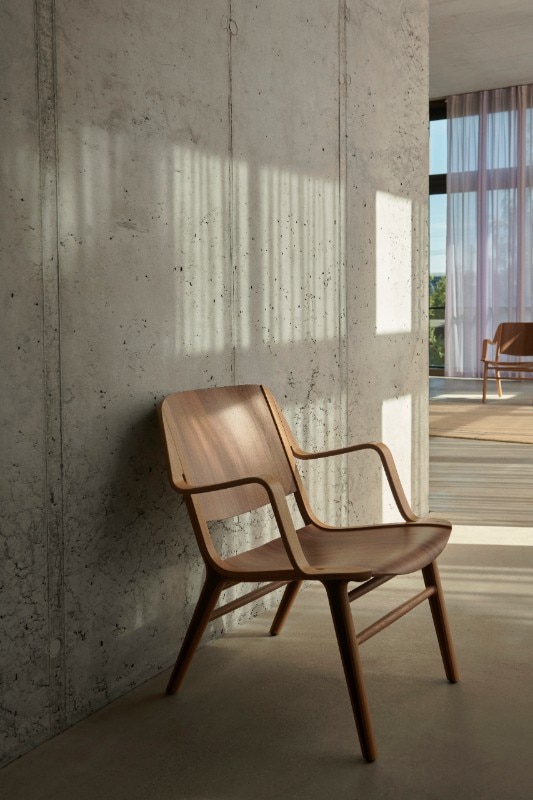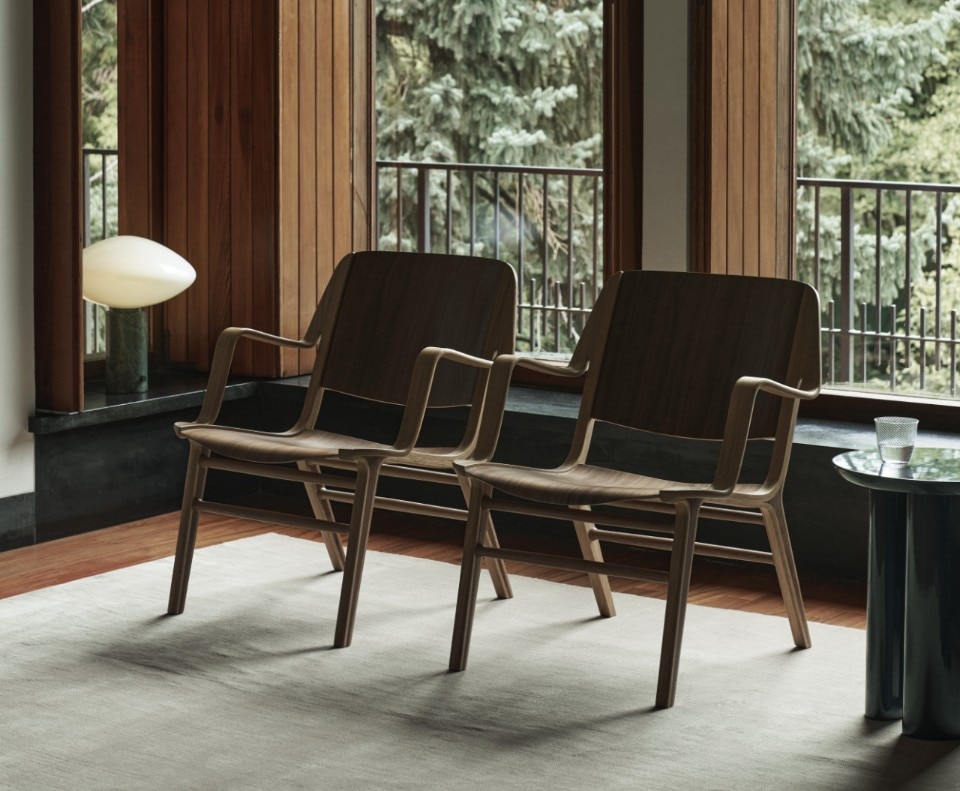This article was originally published on Domus 1091.
Gio Ponti’s Domus always had words of admiration for Nordic design. At the 1951 Triennale, Denmark participated with Erik Herløw’s calibrated installation, and the “subtle selection” was described as being “of a high and thoughtful level”. It included Kay Bojesen’s cutlery, an armchair “with wings and horns” by Finn Juhl, tables, carpets, ceramics and a proposal of chairs, which were refined “like a collection of instruments”, because “the chair is the smallest concentrate and perfect means to experiment with modern technique and style” (Domus 259, June 1951).

Of particular interest is the laminated wood and leather armchair made by Fritz Hansen, based on a design by Peter Hvidt(1916-1986) and Orla Mølgaard-Nielsen(1907-1993). It is “a Danish model that was widely exported abroad; note, in particular, the special treatment of the plywood, similar to that of tennis rackets”, reads the caption below the detail of the legs. The plywood chair, known as AX, was conceived by the Danish duo who trained as cabinet-makers, in search of design solutions that were attentive to storage and shipping concerns, particularly in the critical post-war production context.
The archive drawing of the AX chair, dated1949, conveys the desire to exploit the expressive and functional potential of moulded laminated wood.
As early as 1944,they had created a series of wood and veneer furnishings – the Portex series –which could be stacked and dismantled and were designed for international export. Their work belonged to a period of design democratization, in the wake of the competition for low-cost furniture launched by MoMA in New York in 1948, which would lead designers from around the world –including Charles Eames, Marcel Breuer, Robin Day and Marco Zanuso – to reflect on the need for more accessible furnishings.

The archive drawing of the AX chair, dated1949, conveys the desire to exploit the expressive and functional potential of moulded laminated wood. The chair has two separate plywood frames that, when curved, generate the backrest and legs, connected by turned elements inserted through dowels. Exhibited at the Milan Triennale, AX was an immediate success in the glulam version. Award-winning and produced since 1950, it entered Danish design history as the most comfortable unupholstered chair.
Today, it is being reissued by Danish company &Tradition, thanks to collaboration with the heirs of Hvidt and Mølgaard who have been preserving the studio’s heritage since 2016 to ensure continuity. Maintaining AX’s technical characteristics, the structure is made of laminated oak, pressed around a solid walnut insert and finished on a lathe, as are the seat, back and armrests, which are also made of form-pressed veneer.


